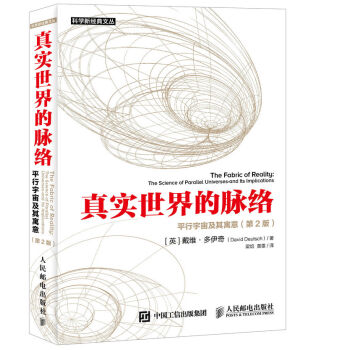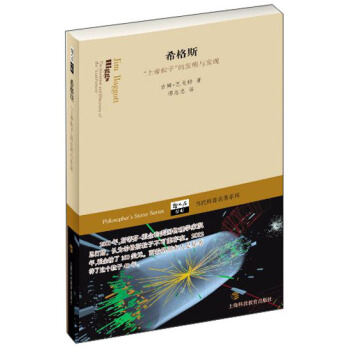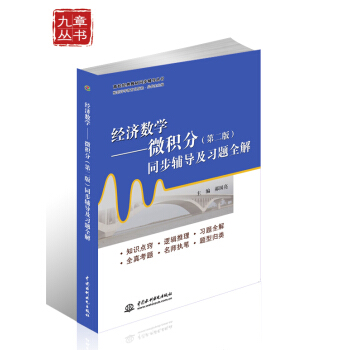![初等概率论(第4版)(英文版) [Elementary Probability Theory 4th ed]](https://pic.windowsfront.com/10104477/c96ac80b-3f65-4ce8-8342-771fcb7f7a70.jpg)

具体描述
内容简介
本书是一部介绍概率论及其应用的入门教程。其原始版本面世已经有30余年,但仍然是本科一二年级的经典概率教程。在第4版中增加了两章讲述应用和数学金融。传承前面版本详细、严谨的风格,讲述了有价证券和期货理论的基本知识。书中用最初等的方法讲述了概率测度、随机变量、分布以及期望等基本概念。离散和连续的案例都有所涉及,在讲述后者的时候运用了微积分知识。配以大量的典型例子重点讲述概率推理,集中介绍了组合问题、Poison过程、随机漫步、遗传模型和Markov链。每章末都附有习题及其解答。目次:集合;概率;计数;随机变量;附录。读者对象:数学专业的本科生以及广大概率论爱好者。
内页插图
目录
PREFACE TO THE FOURTH EDITIONPROLOGUE TO INTRODUCTION TO MATHEMATICAL FINANCE
1 SET
1.1 Sample sets
1.2 Operations with sets
1.3 Various relations
1.4 Indicator
Exercises
2 PROBABILITY
2.1 Examples of probability
2.2 Definition and illustrations
2.3 Deductions from the axioms
2.4 Independent events
2.5 Arithmetical density
Exercises
3 COUNTING
3.1 Fundamental rule
3.2 Diverse ways of sampling
3.3 Allocation models; binomial coefficients
3.4 How to solve it
Exercises
4 RANDOM VARIABLES
4.1 What is a random variable?
4.2 How do random variables come about?
4.3 Distribution and expectation
4.4 Integer-valued random variables
4.5 Random variables with densities
4.6 General case
Exercises
APPENDIX 1: BOREL FIELDS AND GENERAL RANDOM VARIABLES
5 CONDITIONING AND INDEPENDENCE
5.1 Examples of conditioning
5.2 Basic formulas
5.3 Sequential sampling
5.4 P61yas urn scheme
5.5 Independence and relevance
5.6 Genetical models
Exercises
6 MEAN, VARIANCE, AND TRANSFORMS
6.1 Basic properties of expectation
6.2 The density case
6.3 Multiplication theorem; variance and covariance
6.4 Multinomial distribution
6.5 Generating function and the like
Exercises
7 POISSON AND NORMAL DISTRIBUTIONS
7.1 Models for Poisson distribution
7.2 Poisson process
7.3 From binomial to normal
7.4 Normal distribution
7.5 Central limit theorem
7.6 Law of large numbers
Exercises
APPENDIX 2: STIRLINGS FORMULA AND DE MOIVRE-LAPLACES THEOREM
8 FROM RANDOM WALKS TO MARKOV CHAINS
8.1 Problems of the wanderer or gambler
8.2 Limiting schemes
8.3 Transition probabilities
8.4 Basic structure of Markov chains
8.5 Further developments
8.6 Steady state
8.7 Winding up (or down?)
Exercises
APPENDIX 3: MARTINGALE
9 MEAN-VARIANCE PRICING MODEL
9.1 An investments primer
9.2 Asset return and risk
9.3 Portfolio allocation
9.4 Diversification
9.5 Mean-variance optimization
9.6 Asset return distributions
9.7 Stable probability distributions
Exercises
APPENDIX 4: PARETO AND STABLE LAWS
10 OPTION PRICING THEORY
10.1 Options basics
10.2 Arbitrage-free pricing: 1-period model
10.3 Arbitrage-free pricing: N-period model
10.4 Fundamental asset pricing theorems
Exercises
GENERAL REFERENCES
ANSWERS TO PROBLEMS
VALUES OF THE STANDARD NORMAL DISTRIBUTION FUNCTION
INDEX
前言/序言
In this edition two new chapters, 9 and 10, on mathematical finance areadded. They are written by Dr. Farid AitSahlia, ancien dlve, who hastaught such a course and worked on the research staff of several industrialand financial institutions.The new text begins with a meticulous account of the uncommon vocab-ulary and syntax of the financial world; its manifold options and actions,with consequent expectations and variations, in the marketplace. These arethen expounded in clear, precise mathematical terms and treated by themethods of probability developed in the earlier chapters. Numerous gradedand motivated examples and exercises are supplied to illustrate the appli-cability of the fundamental concepts and techniques to concrete financialproblems. For the reader whose main interest is in finance, only a portionof the first eight chapters is a "prerequisite" for the study of the last twochapters. Further specific references may be scanned from the topics listedin the Index, then pursued in more detail.
I have taken this opportunity to fill a gap in Section 8.1 and to expandAppendix 3 to include a useful proposition on martingale stopped at anoptional time. The latter notion plays a basic role in more advanced finan-cial and other disciplines. However, the level of our compendium remainselementary, as befitting the title and scheme of this textbook. We have alsoincluded some up-to-date financial episodes to enliven, for the beginners,the stratified atmosphere of "strictly business". We are indebted to RuthWilliams, who read a draft of the new chapters with valuable suggestionsfor improvement; to Bernard Bru and Marc Barbut for information on thePareto-L~vy laws originally designed for income distributions. It is hopedthat a readable summary of this renowned work may be found in the newAppendix 4.
用户评价
老实说,在拿起《初等概率论(第4版)》之前,我脑海中的“概率论”三个字就代表着晦涩难懂的数学公式和令人头疼的证明。我曾经尝试过几本其他的概率论书籍,结果都以失败告终,基本上翻了几十页就放弃了。但是,这本《初等概率论(第4版)》彻底改变了我的看法。它没有用那种高高在上的姿态来讲解,而是像一个耐心十足的朋友,一步一步地引领你走入概率的世界。我印象最深的是书中关于泊松分布和指数分布的部分,作者用生活中非常贴近的例子,比如网站的访问量、设备故障的间隔时间,来解释这些分布的含义和适用场景。这种“接地气”的讲解方式,让我觉得概率论并非遥不可及,而是与我们的生活息息相关。而且,书中还提供了大量的练习题,从简单的概念理解到稍微复杂的应用,每一类题目都有细致的解答思路,这对于我这种需要动手实践才能加深理解的学习者来说,简直是福音。读完这本书,我不仅掌握了基础的概率知识,更重要的是,我克服了对数学的恐惧,建立了学习的信心。
评分坦白说,我买这本书时是带着一种“试试看”的心态。《初等概率论(第4版)》在我看来,就像一本精心打磨的工具书,每一页都充满了实用价值。我不是数学专业的学生,之前接触概率论主要是为了在工作中能更好地理解一些数据分析报告。这本书的叙述方式非常直接,直奔主题,但又不失严谨。它专注于介绍概率论中最核心、最常用的概念,例如随机事件、概率的计算方法、离散和连续随机变量的性质,以及常见的概率分布。书中给出的例子都非常贴合实际工作场景,比如风险评估、故障率分析等等,这让我能快速地将书中的知识应用到我的工作中去。我特别喜欢书中对各种分布的介绍,它们都有明确的应用边界和特点,作者讲解得非常透彻,让我能够根据不同的问题选择合适的分布模型。这本书的优点在于它的“够用”和“实用”,没有那些过于深奥的理论,而是聚焦于真正能解决问题的知识。对于那些希望快速提升自己数据分析和理解能力,并且希望有一个可靠的参考书的职场人士来说,这本书绝对是物超所值。
评分这本《初等概率论(第4版)》给我的感觉,就像是在一个迷宫里找到了一个清晰的地图,而且地图上还标记了所有重要的转折点和终点。《初等概率论(第4版)》给我带来的冲击不仅仅是知识的获得,更是思维方式的重塑。在接触这本书之前,我对概率的理解停留在“可能性”这个模糊的概念上,完全无法量化和分析。但通过阅读这本书,我才真正理解了“随机性”并非混乱无序,而是遵循着严谨的数学规律。作者在介绍条件概率和贝叶斯定理时,运用了大量的图示和逻辑推理,将抽象的概念变得具体可感。我尤其赞赏书中对独立性和相关性的辨析,这让我能够更准确地理解事件之间的关系,避免了许多常见的误解。举例来说,书中对“辛普森悖论”的解释,让我恍然大悟,原来数据呈现的表面现象可能与背后的真实规律大相径庭。这种深入浅出的讲解,让我对数据分析和决策制定有了更深刻的认识。这本书不仅教授了知识,更培养了我一种批判性思维和严谨分析问题的能力,这对我未来的学术研究和工作都将大有裨益。
评分这本书简直是为我量身定做的!作为一个对统计学和数据科学充满好奇,但又害怕复杂数学理论的初学者,我一直找不到一本真正让我安心入门的书。《初等概率论(第4版)》就满足了我所有期待。它的语言非常平易近人,没有那些吓人的数学符号堆砌,而是用大量生动形象的例子来解释概念。我尤其喜欢书中关于随机变量和概率分布的章节,作者并没有直接抛出公式,而是先从日常生活中的场景入手,比如抛硬币、掷骰子,然后逐步引导读者理解期望值、方差这些核心概念。更让我惊喜的是,书中还穿插了一些实际应用的案例,比如蒙特卡洛模拟在金融领域的应用,这让我看到了概率论的实际价值,也激发了我进一步学习的动力。我一直担心自己会因为看不懂数学推导而放弃,但这本书的讲解方式让我完全没有这种压力,甚至觉得在阅读一个精彩的故事。排版也很舒适,字体大小适中,章节之间的过渡自然流畅,完全不会有枯燥的感觉。如果有人问我“零基础想学概率论,该看哪本书?”,我会毫不犹豫地推荐它,而且还会加上一句“这本书真的能让你爱上概率!”
评分《初等概率论(第4版)》这本书给我带来的体验,可以用“拨云见日”来形容。我之前在学习机器学习的过程中,经常会遇到各种概率模型,但始终感觉隔靴搔痒,无法真正理解其背后的原理。这本书的出现,恰好填补了我知识体系中的这一重要空白。它在讲解组合数学、概率的基本公理等内容时,逻辑清晰,条理分明,将复杂的概念分解成易于理解的单元。我尤其欣赏书中对于大数定律和中心极限定理的阐述,通过生动的图示和严谨的推导,让我深刻理解了这些统计学中最核心的定理是如何工作的,以及它们在实际应用中的强大威力。这本书并没有止步于理论的阐述,还融入了大量的统计推断和决策理论的内容,这对于我理解如何从数据中提取有价值的信息,并做出合理的决策非常有帮助。读完之后,我感觉自己对数据有了更敏锐的洞察力,能够更自信地去分析和解读各种统计数据。
评分不错,这个质量还过得去,。
评分沈溪儿偶见朋友,不愿意再划船了,要拉着去玩。林雨翔追上去严肃道喂,马德保说了,不准——
评分应该是正版,物流很给力
评分书挺好,要沉下心来读才行。
评分应该挺好的,还没看,后面争取看完!
评分正版图书,还不错,有利于数学和英语的学习,就是生词量太大了。
评分为了作者买来看看这本书怎么样
评分概率论经典,适合本科生阅读
评分不错
相关图书
本站所有内容均为互联网搜索引擎提供的公开搜索信息,本站不存储任何数据与内容,任何内容与数据均与本站无关,如有需要请联系相关搜索引擎包括但不限于百度,google,bing,sogou 等
© 2025 book.coffeedeals.club All Rights Reserved. 静流书站 版权所有

![数学名著译丛·数学:它的内容、方法和意义(第2卷) [Mathematics,Its Essence,Method,and Role] pdf epub mobi 电子书 下载](https://pic.windowsfront.com/11228781/rBEQYFGUUTcIAAAAAAf8wfPsBjYAABRvwFblpsAB_zZ287.jpg)




![当代科著名著系列·科学简史:从文艺复兴到星际探索 [Philosopher′s Stone Series] pdf epub mobi 电子书 下载](https://pic.windowsfront.com/11700361/5637211dN2ef415ee.jpg)

![国家科技进步奖获奖丛书·物理改变世界 边缘奇迹:相变和临界现象(修订版) [Phase Transitions and Critical Phenomena] pdf epub mobi 电子书 下载](https://pic.windowsfront.com/11900195/570f6b7aNf469f65c.jpg)

![机动车可吸入颗粒物排放与城市大气污染 [Motor Vehicle Inhalable Particle Emission and Urban Air Pollution] pdf epub mobi 电子书 下载](https://pic.windowsfront.com/11664706/550fcadeNccfc8a0a.jpg)
![景观生态学:格局过程尺度与等级(第2版) [Landscape Ecology] pdf epub mobi 电子书 下载](https://pic.windowsfront.com/10000597/564e90e9N954d1f91.jpg)
![线性代数(第2版)(英文影印版) [LINEAR ALGEBRA DONE RIGHT 2nd ed] pdf epub mobi 电子书 下载](https://pic.windowsfront.com/10096471/67794adb-cfbb-4e8a-af3e-ea0a70cb657f.jpg)


![凝聚态物理学(下卷) [Condensed Matter Physics (Voume 2)] pdf epub mobi 电子书 下载](https://pic.windowsfront.com/11349885/564150dfN1a38df69.jpg)



![数论经典著作系列:初等数论(3) [Elementary Number Theory(3)] pdf epub mobi 电子书 下载](https://pic.windowsfront.com/11014006/rBEDik_e9OQIAAAAAAAeLz18FhwAAAwngBECRMAAB5H441.jpg)
